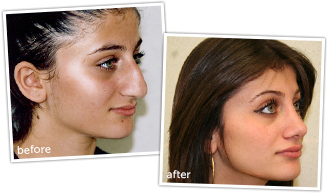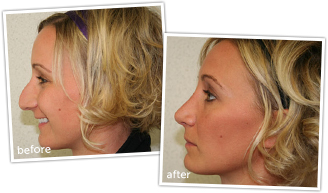Facelift Surgery - Chicago
Turn Back Time with Expert Facial Rejuvenation
Many would argue that the face is the most prominent feature of one’s appearance, making it a premiere focus of plastic surgery procedures and treatments. For those wishing to restore their youthful looks, eliminate wrinkles, and diminish the appearance of jowls, fine lines, and folds in the skin, facelift surgery is an ideal cosmetic option.
Dr. Elias Gikas is a highly skilled board-certified plastic surgeon and has provided countless patients in the Chicago area with beautiful and natural-looking facelift results.
Why Consider Facelift Surgery?
Studies show that by the time you hit 40, your collagen production levels drop 25%. This makes it harder for you to maintain supple, firm skin. While non-surgical treatments like Botox and fat injections can reduce wrinkles and restore some volume, they don’t address deeper sagging or excess skin.
As aging continues, loose skin around the jawline and deep folds become more noticeable. A facelift tightens and lifts facial tissues, providing longer-lasting results that non-surgical treatments can’t achieve.
How Facelift Surgery Is Performed
Here’s how a facelift procedure is typically done:
- Incisions: The surgeon makes small, discreet cuts along the hairline and around the ears.
- Tissue Repositioning: Muscles and underlying structures are adjusted to restore facial contours.
- Excess Skin Removal: Loose skin is trimmed to create a smoother appearance.
- Closure: Fine sutures or surgical adhesives secure the skin for minimal scarring.
- Final Touches: Some procedures include liposuction or fat grafting for added definition.
Different Facelift Techniques
Facelift surgeries aren’t one-size-fits-all. Depending on your goals, a surgeon may recommend:
- Traditional Facelift: Addresses deeper tissues and excess skin for full-face rejuvenation.
- Mini Facelift: A less invasive option with smaller incisions, ideal for mild sagging.
- SMAS Facelift: Lifts deeper facial layers for longer-lasting, more natural results.
- Deep Plane Facelift: Repositions underlying structures for a more dramatic yet natural lift.
Facelift Surgery Expected Results
After a facelift, your skin needs time to heal and adjust before the final results are fully visible. While every patient heals differently, here’s what you can expect at different stages of the recovery process:
Post-Surgery (First Few Days)
Swelling and bruising will be most noticeable during this time, especially around the cheeks and jawline. The skin may feel tight, and you might experience mild discomfort, which can be managed with prescribed pain medication. Some patients also report temporary numbness or tingling as the nerves begin to heal.
One to Two Weeks After Surgery
Bruising starts to fade, and most swelling begins to subside. Many patients feel comfortable going out in public with makeup to conceal residual discoloration. Stitches are usually removed around this time, and tightness in the face gradually decreases. You’ll still need to take it easy, but light activities can be resumed.
One Month After Surgery
Most swelling is gone during this phase. Your facial contours also start to become more defined. Any lingering tightness continues to improve. Many patients feel comfortable resuming work and regular activities at this stage, though strenuous exercise should still be avoided.
Three to Six Months After Surgery
At this stage, the skin has fully settled, and scars start to fade. Your face looks refreshed and natural, with improved definition around the jawline and cheeks. Minor residual swelling may still be present but is typically unnoticeable.
One Year and Beyond
Facelift scars mature and fade significantly, often becoming barely visible. Your results should be fully set, and with proper skincare, you can maintain your refreshed appearance for years.
Facelift Recovery Time and Aftercare
A smooth recovery is key to achieving the best possible results. While healing times vary, here’s a general timeline and best practices to follow:
Recovery Timeline
- First 24-48 Hours: Rest is essential. You may need someone to assist you with daily tasks. Keep your head elevated to minimize swelling.
- Week 1: Swelling and bruising peak but begin to improve. Avoid excessive facial movements and follow your surgeon’s instructions for wound care.
- Week 2: Stitches are typically removed, and most bruising fades. Light activities can be resumed, but no strenuous exercise.
- Week 3-4: Major swelling subsides, and your new facial contours become more visible. Most patients feel comfortable going back to work.
- Month 2 and Beyond: Final results take shape, and minor swelling continues to diminish over the next few months.
Best Practices for Aftercare
- Your doctor will provide detailed post-op care guidelines—follow them closely for a smooth recovery.
- Sleeping with your head propped up helps reduce swelling and prevents excess pressure on healing tissues.
- Ice packs can help with swelling during the first few days but should not be applied directly to the skin.
- Avoid smoking and alcohol, as these can slow healing and increase the risk of complications.
- UV rays can worsen scars and prolong swelling. Always wear sunscreen and a wide-brimmed hat when outdoors.
- Avoid harsh exfoliants, retinoids, and strong acids until your surgeon clears you to resume normal skincare routines.
Are You a Good Candidate for Facelift Surgery?
Not everyone is an ideal candidate for facelift surgery, so it’s important to understand the factors that make someone a good fit for the procedure.
Ideal Candidates for a Facelift
- Good Skin Elasticity: Skin that still has some flexibility responds better to the lifting process, creating smoother, longer-lasting results.
- General Good Health: Since a facelift is a surgical procedure, candidates should be in overall good health with no conditions that could slow down healing.
- Non-smoker or Willing to Quit: Smoking affects circulation and can increase the risk of complications. Surgeons often advise quitting before and after surgery for optimal recovery.
- Realistic Expectations: Reviewing facelift before and after photos can help set realistic goals. A facelift enhances facial contours, but it won’t completely stop the aging process.
Who Might Not Be a Good Candidate?
- Individuals with serious medical conditions that could make surgery unsafe.
- Those looking for minor touch-ups—non-surgical options like fillers may be a better fit.
- Anyone unwilling to commit to the necessary recovery period.
Facelift Surgery Cost and Financing Options
The cost of a facelift varies, as each procedure is customized to meet the patient’s needs. Factors such as anesthesia, facility fees, and post-operative care may affect the total price. Financing options are available to make treatment more accessible. Contact Dr. Elias Gikas for more details and a personalized estimate.
Answering Your Facelift Questions
How long do facelift results last?
Results typically last 10 to 15 years, depending on factors like skin quality, lifestyle, and skincare maintenance. While a facelift can turn back the clock, natural aging will continue over time.
Are there non-surgical alternatives to a facelift?
Yes, treatments like fillers, Botox, and laser skin resurfacing can address mild signs of aging. However, they can’t achieve the same level of correction as a facelift, especially for sagging skin.
When can I wear makeup after a facelift?
Most patients can apply makeup after two weeks once initial healing is complete. However, it’s essential to follow your surgeon’s instructions to avoid irritation.
How soon can I return to work?
Many patients return to non-strenuous jobs within two weeks. If your job involves physical activity, you may need additional time to recover fully.
Meet Dr. Elias Gikas
Dr. Elias Gikas is a board-certified plastic surgeon with decades of experience helping patients look and feel their best. Known for his personalized approach and attention to detail, he ensures every patient feels heard, informed, and confident in their decision.
With a strong focus on safety, precision, and natural-looking results, Dr. Gikas is committed to providing expert care in a welcoming, supportive environment.
Schedule Your Facelift Consultation
If sagging skin or deep folds are making you feel less like yourself, facelift surgery in Chicago can help restore a natural, refreshed look. Book your consultation with Dr. Gikas today to explore your options with expert guidance!
Related Posts
To get drooping skin and muscle tissue tightened and smoothed, consider the facelift procedure. This… As we age, our skin loses its elasticity and starts to wrinkle and sag. While…

Related Links



